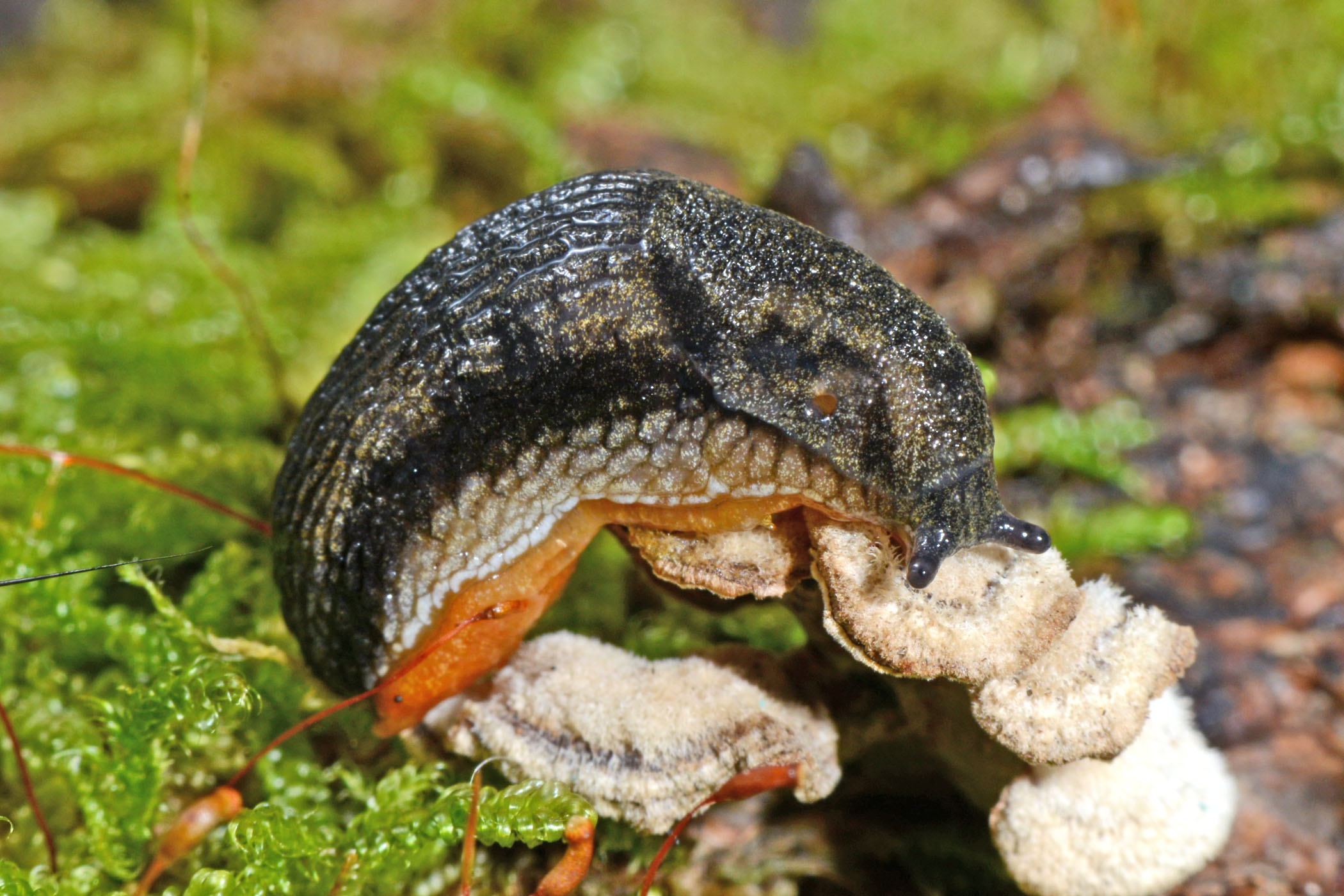| Mollusca : Gastropoda : Stylommatophora : Arionidae | Snails and slugs |
Arion hortensis A. Férussac, 1819
Southern garden slug
 |
| Arion hortensis |
Description: One of the 'garden' slugs characterised collectively by their depressed, relatively elongate shape, inability to contract into a bell shape, and orange sole. The present species is distinguished by the colour of its sides below the lateral bands, which are whitish grey to a bluish grey, by its tentacles which have a warm, rosy flush and by the absence of orange colour on the back. 30-35 mm.
World Distribution: Found across north-west Europe including the British Isles, France, Holland and Belgium, but not extending as far north as Arion distinctus, nor as far south. Distribution type: Oceanic Temperate (71).
Irish Distribution: Mainly recorded from southern and eastern counties becoming steadily rarer towards the north and west. In northern counties generally confined to gardens or on well-drained soils, particularly near the coast.
Ecology:
- In southern counties it tends to outnumber Arion distinctus in woodlands but the seasonality is different
- Davies (1979) considered that A. hortensis was more closely associated with gardens than A. distinctus but there is in fact little ecological separation in Ireland; De Wilde (1983, 1986) found a similar lack of separation in Belgium
- Arion distinctus is more tolerant of cold, moisture-saturated soils and its European range extends farther north, to Scandinavia and the Faroe Islands (Holyoak & Seddon, 1983)
- An autumn breeder with adults more likely to be present in summer and autumn
Key Identification Features:
- A garden slug with depressed elongate shape and inability to contract into a bell shape
- Colour generally dark, but with more contrasting, whitish sides and dark back, and bright orange or orange-red sole
- Tentacles dark grey but translucent, with a warm or rosy glow
- Back colour always uniformly grey without the paler shades found in many Arion distinctus in which orange chromatophores tend to accumulate on the back
- Tuberculation on the back slightly better developed than in A. distinctus with more elevated tubercles, apparent more when at rest
Taxonomy:
- See remarks under Arion distinctus.
Red list status:
- Least concern (lc).
Distribution Map from NBN: Arion hortensis at National Biodiversity Network mapping facility, data for UK.
iNaturalist: Arion hortensis at iNaturalist World Species Observations database.
GBIF data for Arion hortensis | Classification: Gastropoda, Stylommatophora, Arionidae, Arion
Thumbnails for genus Arion
| Anderson, R., 2025. Arion hortensis. A. Férussac, 1819. [In] MolluscIreland. https://www2.habitas.org.uk/molluscireland/species.php?item=31. Accessed on 2025-04-02. |



